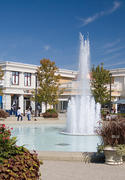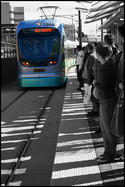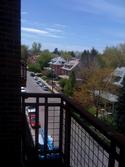The 1990s proved to be quite a nice decade indeed for most of America's largest cities. It was an era of general prosperity in all of America to be sure, but in contrast to previous decades, the turnaround also extended from the suburbs to many of the nation's biggest cities, notably New York, Chicago, Miami, San Francisco and San Jose. The notion – popular in the 70s and 80s – associating cities with a sour and fatalistic sense of decline and dysfunction, or even anarchy, in the 90s finally began to evaporate. read more »
Urban Issues
Urban Legends: Why Suburbs, Not Dense Cities, are the Future
The human world is fast becoming an urban world -- and according to many, the faster that happens and the bigger the cities get, the better off we all will be. The old suburban model, with families enjoying their own space in detached houses, is increasingly behind us; we're heading toward heavier reliance on public transit, greater density, and far less personal space. read more »
New York Commuting Profile: From Monocentrism to Edgeless City
The US Bureau of the Census has just released detailed county to county and place (municipality) to place work trip flow tables. This new data is the most comprehensive since the 2000 census and covers 2006 to 2008.
The county to county data is particularly useful for analysis in the nation's largest metropolitan area (Note 1), New York. The New York metropolitan area has more than 19 million people and stretches across 6,700 square miles of land area, one half of it in the urban area, which is the urban footprint that includes all areas, including suburbs, in the continuous urbanization (3,350 square miles) and the other half rural (Note 2). read more »
- Login to post comments
A Localist Solution
By Richard Reep
“There is a great deal of historical evidence to suggest that a society which loses its identity with posterity and which loses its positive image of the future loses also its capacity to deal with present problems, and soon falls apart.”
--Kenneth Boulding, economist and philosopher (1966)
Written in the depths of the Cold War, when nuclear annihilation appeared imminent, if not inevitable to some, Boulding’s words remain applicable to today’s popular culture. Increasingly unable to imagine a positive future since the 1990s, we have largely replaced the end of the nuclear threat with the beginning of global warming, among other environmental threats. Others have raised the spectre of Chinese global domination or a prolonged and destructive jihad from the Islamic world. read more »
- Login to post comments
Mass Transit: The Great Train Robbery
Last month promoters of the Metropolitan Transit Authority's Los Angeles rail projects, both past and future, held a party to celebrate their "success." Although this may well have been justified for transit-builders and urban land speculators, there may be far less call for celebration among L.A.'s beleaguered commuters.
Despite promises that the $8 billion invested in rail lines over the past two decades would lessen L.A.'s traffic congestion and reshape how Angelenos get to work, the sad reality is that there has been no increase in MTA transit ridership since before the rail expansion began in 1985. read more »
Melbourne: Government Seeking Housing Affordability
Once a country known as “lucky” for its affordable quality of life, Australia has achieved legendary status as a place where public policies have destroyed housing affordability for the middle class. Draconian land rationing policies (called "urban consolidation" in Australia and more generally "compact city" policy or "smart growth"), have made it virtually illegal to build houses outside tightly drawn urban growth boundaries that leave virtually no room for new construction beyond the urban fringe. read more »
Can The Suburban Fringe Be Downtown Adjacent?
For many suburban Americans, the thought of migrating to a center-city environment holds an intriguing appeal, fueled by urbanists who tout the benefits of stunning cityscape views, walkability, proximity to civic and cultural amenities, and street vibrancy. I happen to be among those suburbanites who have harbored a secret fantasy of living in a dense downtown environment, replete with throngs of creative millennials roaming the streets, fancy coffee houses, and close access to fine dining. A decision to move from suburban Sacramento to Denver has been the result. read more »
Ownership Subsidies: Dream Homes or Disasters?
Home ownership has been considered an integral part of the American Dream for as long as anyone can remember. Now it has come under scrutiny, notably in a June Wall Street Journal piece by Richard Florida, which claims that that home ownership reduces employment opportunities for young adults, since it limits their mobility. read more »
Health Care Development in Central Florida
By Richard Reep
In this still cooling economy, Florida seems to be continually buffeted by a perfect storm of unemployment, record foreclosures, and stagnant population growth. As the state continues to suffer, the health care industry has unfolded two planning efforts aimed at building some economic momentum. read more »
Going Underground in Australia
Just over a decade ago, governments in Australia were immune to calls for accelerated infrastructure investment in our major urban centres. Plans for strategic reinvestment were rare. Much has changed in that time, maybe too much. It seems that enthusiasm for major urban infrastructure now runs ahead of impartial assessment of the cost, versus the claimed benefits. A proposed $8.2 billion underground rail loop for Brisbane, along with a new underground station for its busy downtown, provides one example of an over exuberant propensity to spend. read more »




















